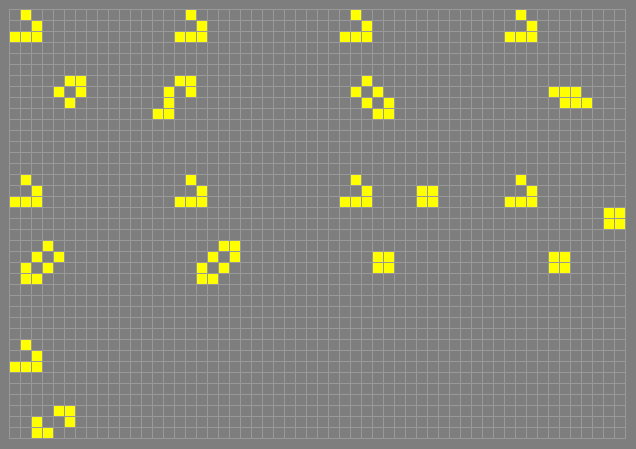A one-time glider reflector, or in other words a
single-glider seed (the term is seldom or never used in relation to
spaceships other than gliders). One-time turners may be 90-degree or
180-degree, or they may be 0-degree with the output in the same
direction as the input. A reusable turner would instead be called a
reflector. Shown on the top row below are the four 90-degree turner
reactions that use common small ash objects: boat, eater1,
long boat, and toad.

Of the reactions on the first row, the glider output is the same
parity for all but the long boat. The three still lifes are all
colour-changing, but the toad happens to be a colour-preserving
turner. The third row shows an aircraft carrier serving as a
"0-degree turner" that is also colour-changing.
Three of the simplest 180-degree turners are shown in the second
row. The Blockic 180-degree turner is colour-preserving. The
long boat and long ship are again colour-changing; this is
somewhat counterintuitive as the output glider is on exactly the same
lane as the input glider, but gliders travelling in opposite
directions on the same lane always have opposite colours.
Many small one-time turner constellations have also been
catalogued. The 90-degree two-block turner on the right, directly
below the toad, is also colour-changing but has the opposite parity.
A one-time turner reaction can be used as part of a glider
injection mechanism, or as a switching mechanism for a signal.
If a previous reaction has created the sacrificial object, then a
later glider is turned onto a new path. Otherwise it passes through
the area unaffected. This is one way to create simple switching
systems or logic circuits. An example is shown in demultiplexer.









